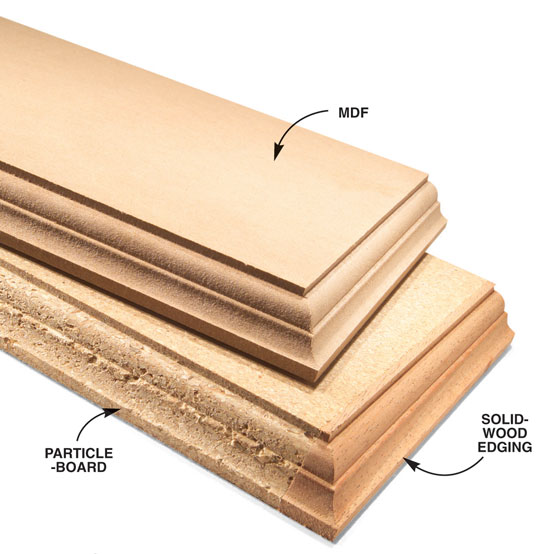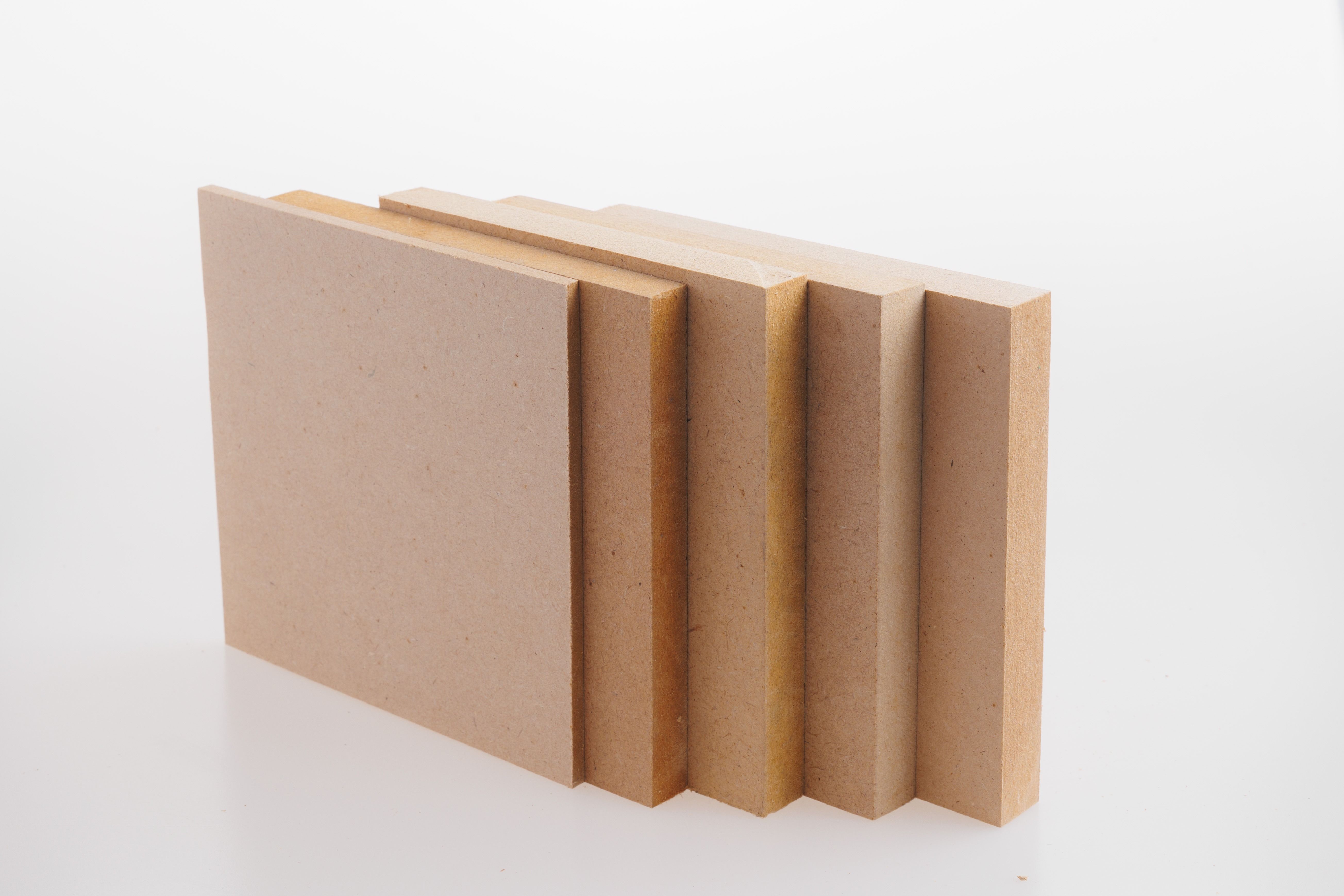MDF Vs Particleboard: A Deep Dive Into The Battle Of The Boards
When it comes to building materials, the debate between MDF and particleboard is as heated as choosing between coffee and tea. Both are engineered wood products, but they have their own quirks that make them perfect—or not so perfect—for different projects. If you're scratching your head trying to decide which one to use for your next DIY adventure, you're in the right place. Let's break it down so you can make an informed choice.
Picture this: you're at the hardware store, staring at two types of boards, both claiming to be the ultimate material for your dream project. But what's the real deal? Is MDF the king of versatility, or does particleboard hold the crown for affordability? This is where we step in to clear the fog and give you the lowdown on these two contenders.
As we dive deeper, we'll explore everything from their composition to their performance in various environments. By the end of this, you'll have all the ammo you need to pick the perfect board for your project. So, buckle up and let's get started!
Read also:Names Of Playboys The Ultimate Guide To Modernday Casanovas
What Exactly is MDF?
MDF, or Medium Density Fiberboard, is like the Swiss Army knife of building materials. It's made by breaking down wood into fibers, mixing them with wax and resin, and then pressing them together under high pressure and heat. The result? A smooth, dense board that's as versatile as they come.
One of the coolest things about MDF is its smooth surface, which makes it perfect for painting and staining. Whether you're building furniture or crafting intricate designs, MDF gives you that polished look without the hassle of dealing with knots or grain patterns.
Advantages of MDF
- Smooth surface for flawless finishes
- Highly versatile and easy to shape
- Resists warping and cracking better than particleboard
Particleboard: The Budget-Friendly Option
On the other side of the ring, we have particleboard. Think of it as the younger, more affordable sibling of MDF. Particleboard is made by compressing wood chips, sawdust, and shavings with resin adhesive. It's lighter and cheaper, making it a go-to choice for those on a tight budget.
While it might not be as smooth or dense as MDF, particleboard has its own set of strengths. For instance, it's great for large surfaces where weight matters, like shelving or cabinet backs. Plus, it's readily available and easy to work with, especially for beginners.
Advantages of Particleboard
- Cost-effective and budget-friendly
- Lightweight and easy to handle
- Ideal for large surfaces and structural support
Composition Showdown: MDF vs Particleboard
Let's talk about what makes these two materials tick. MDF is all about density and smoothness, thanks to its fine fibers and resin mixture. This gives it a uniform texture that's perfect for detailed work. Meanwhile, particleboard relies on larger wood particles, which makes it less dense but more forgiving when it comes to weight.
In terms of strength, MDF takes the crown for holding screws and nails better. Particleboard, on the other hand, can be a bit of a diva when it comes to fasteners. But hey, it makes up for it with its affordability and ease of use.
Read also:Rod Waves Daughter How Old Is She Unveiling The Mystery
Which One is More Durable?
Durability is a big deal, especially if you're investing in long-term projects. MDF generally holds up better in humid conditions and resists warping more effectively. However, both materials can absorb moisture, so sealing them properly is key to extending their lifespan.
Environmental Impact: The Green Factor
Nowadays, being eco-friendly is more than just a buzzword—it's a necessity. When it comes to MDF and particleboard, both use adhesives that can emit formaldehyde, a known carcinogen. However, many manufacturers are stepping up their game by offering low-formaldehyde options.
MDF tends to have a slightly better environmental profile because it uses smaller wood fibers, reducing waste. But particleboard, with its larger wood particles, can also be sourced sustainably if you do your research.
How to Choose the Greener Option
- Look for certifications like CARB (California Air Resources Board)
- Opt for products labeled as E0 or E1 for lower formaldehyde emissions
- Consider recycled content when available
Cost Comparison: Breaking Down the Budget
Let's face it—cost is a major factor in any project. MDF is generally pricier than particleboard due to its denser composition and smoother finish. But don't let that deter you. Sometimes, investing a little more upfront can save you money in the long run.
Particleboard, while cheaper, might require additional reinforcement or finishing touches to achieve the same level of quality. So, it's all about weighing the pros and cons based on your specific needs.
Tips for Staying Within Budget
- Prioritize areas where appearance matters most
- Use particleboard for hidden or less visible components
- Shop around for sales and discounts
Applications: Where Do They Shine?
Knowing where to use each material can make all the difference. MDF is a star player in furniture-making, especially for pieces that require intricate designs or a flawless finish. Think moldings, frames, and custom cabinetry.
Particleboard, on the other hand, excels in applications where weight and cost are concerns. It's commonly used in ready-to-assemble furniture, shelving units, and paneling. The key is to match the material to the job it's meant to do.
Real-Life Examples of MDF and Particleboard in Action
- MDF: Custom kitchen cabinets with detailed carvings
- Particleboard: Affordable bookshelves with basic functionality
Installation Tips: Making the Most of Your Material
Whether you're working with MDF or particleboard, proper installation is crucial. For MDF, always use sharp tools to avoid chipping, and sand the edges for a clean finish. Particleboard requires a bit more TLC when it comes to fastening, so pre-drilling holes is a must to prevent splitting.
Sealing both materials is essential to protect them from moisture and wear. A good quality primer and paint will not only enhance their appearance but also extend their lifespan.
Common Mistakes to Avoid
- Skipping the sealing step
- Using dull tools on MDF
- Over-tightening screws on particleboard
Maintenance and Longevity: Keeping It Looking Good
Proper maintenance is the secret sauce to keeping your MDF and particleboard projects looking their best. Regular cleaning with a damp cloth and avoiding harsh chemicals is a good start. For tougher stains, a mild detergent should do the trick.
If you notice any signs of moisture damage, act fast. Sand down the affected area and reseal it to prevent further damage. With a little care, both materials can last for years, providing you with functional and stylish solutions.
Extending the Life of Your Boards
- Keep them away from direct water sources
- Reapply sealant as needed
- Inspect regularly for signs of wear
Final Verdict: Which One Wins?
So, after all this, which one comes out on top? The truth is, it depends on your project and priorities. If you're after a smooth finish and don't mind spending a little extra, MDF is your best bet. But if budget is your main concern and you're okay with a bit more effort in installation, particleboard is the way to go.
Remember, both materials have their strengths and weaknesses. The key is to choose the one that aligns with your goals and expectations. Whether you're building a masterpiece or just need a quick fix, there's a board out there for you.
In the end, the battle between MDF and particleboard isn't about who's better—it's about finding the right fit for your project. So, take what you've learned here, hit the hardware store, and let your creativity shine!
Call to Action
Now that you're armed with knowledge, why not share your thoughts in the comments below? Have you worked with MDF or particleboard before? What was your experience like? And don't forget to check out our other articles for more tips and tricks to elevate your DIY game!
Article Recommendations


